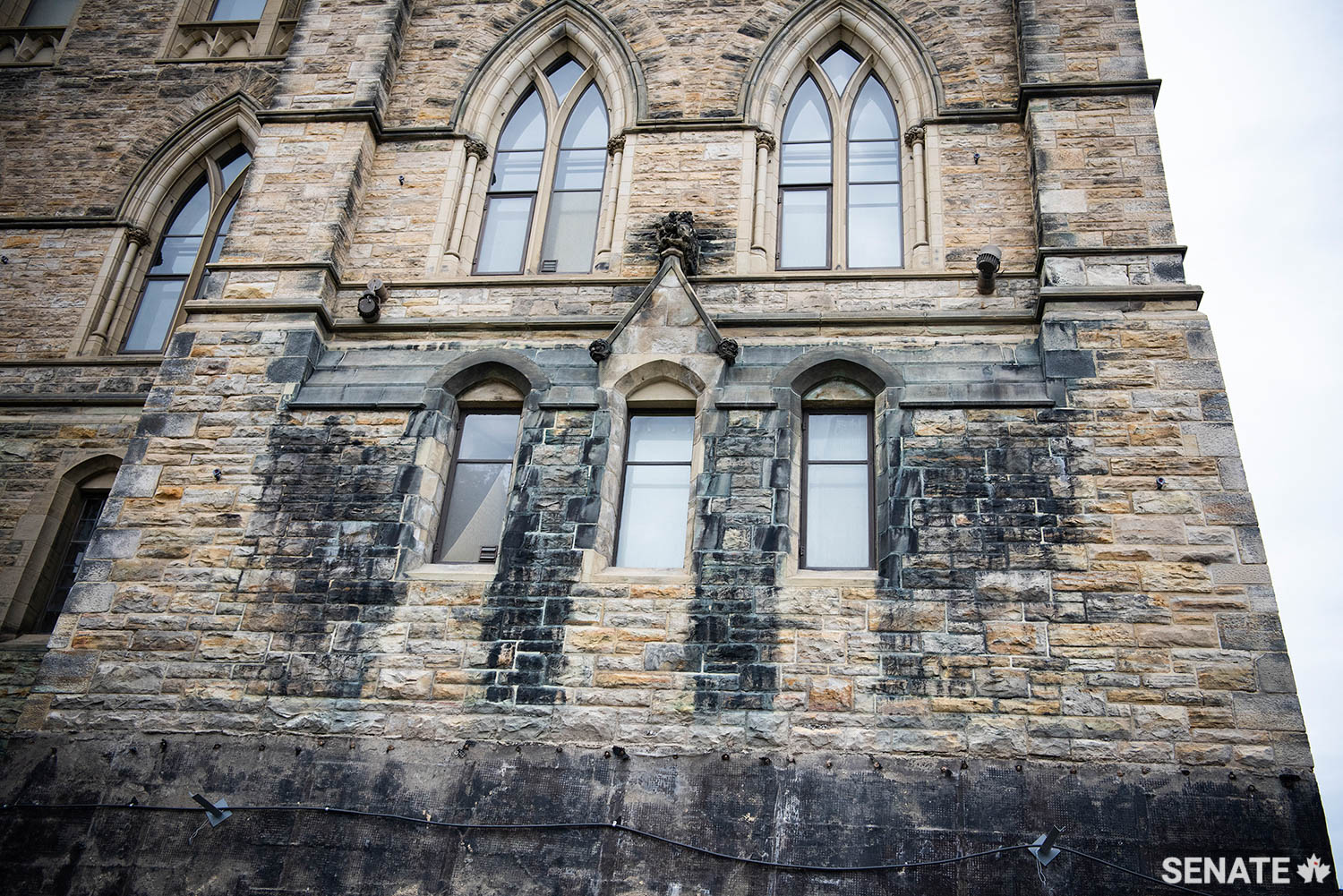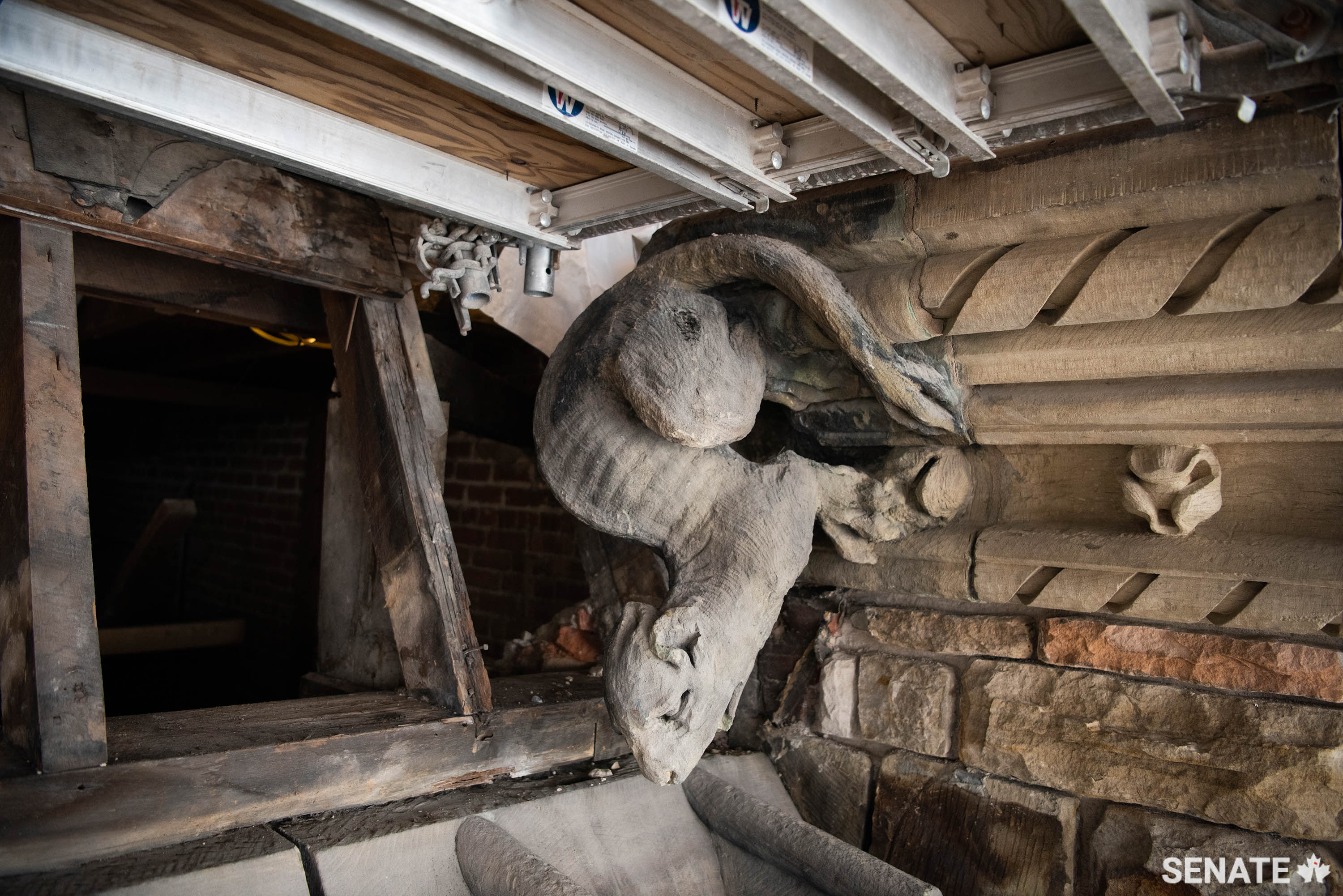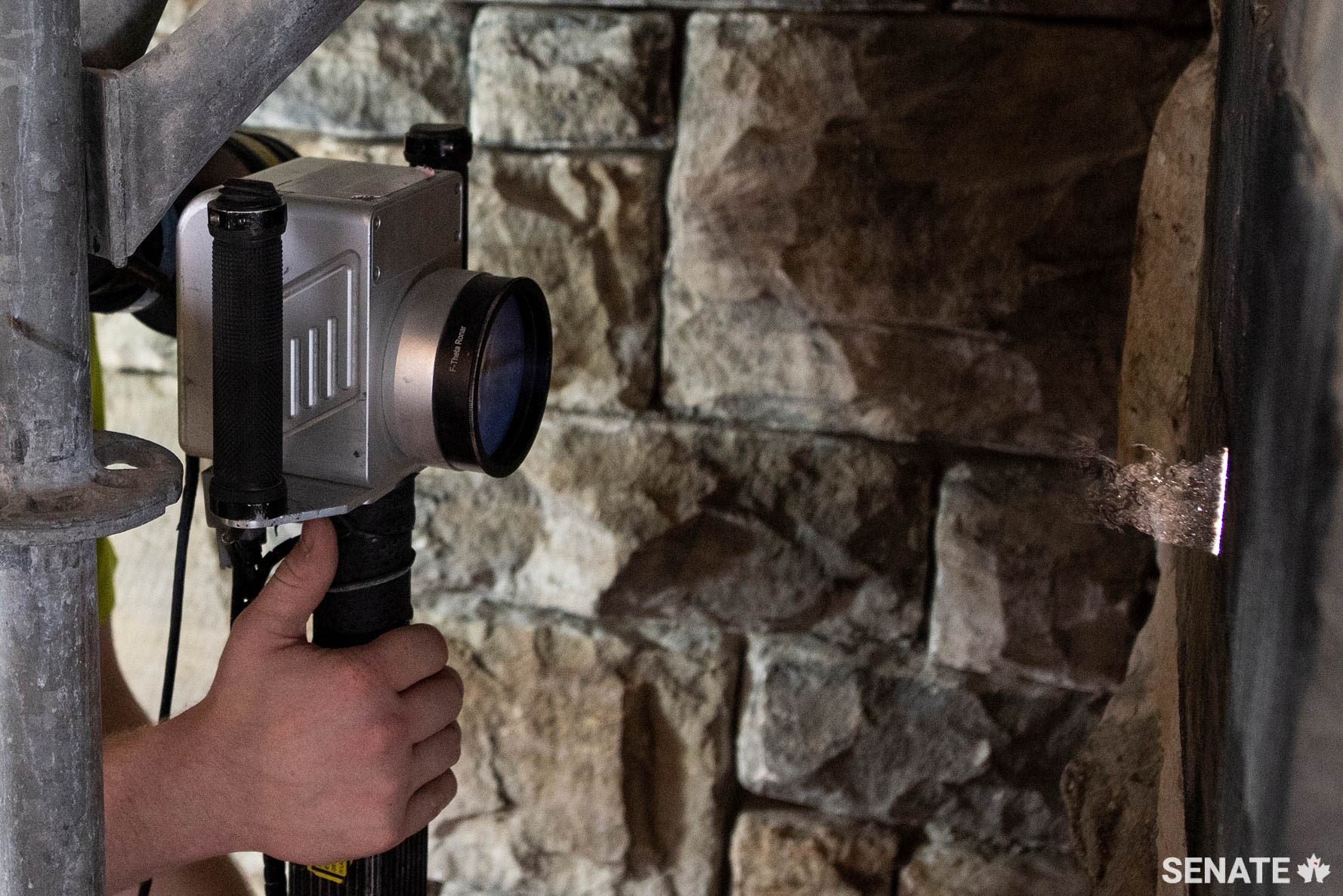Rejuvenating Centre Block’s stonework with a light touch

In February 2019, the Senate moved to the Senate of Canada Building, a former train station built in 1912. The Senate will occupy this temporary location while Parliament’s Centre Block — the Senate’s permanent home — is rehabilitated.
Although Centre Block is shuttered for rehabilitation work, Canadians can still experience its art and architecture through the Senate’s immersive virtual tour.
Parliament Hill’s Centre Block has been under assault for a century by airborne pollutants and colonies of bacteria, algae and fungi that have stained its Nepean Sandstone exterior walls black, green and even orange.
Now, as Centre Block undergoes its first comprehensive restoration in a century, a whirlwind of construction activity has engulfed the building. When Centre Block re-emerges in a few years, its stonework will be completely rejuvenated and decades of soot and grime will have vanished.
It’s a daunting prospect; just how do you go about cleaning a heritage building with a 22,000-square-metre exterior surface?
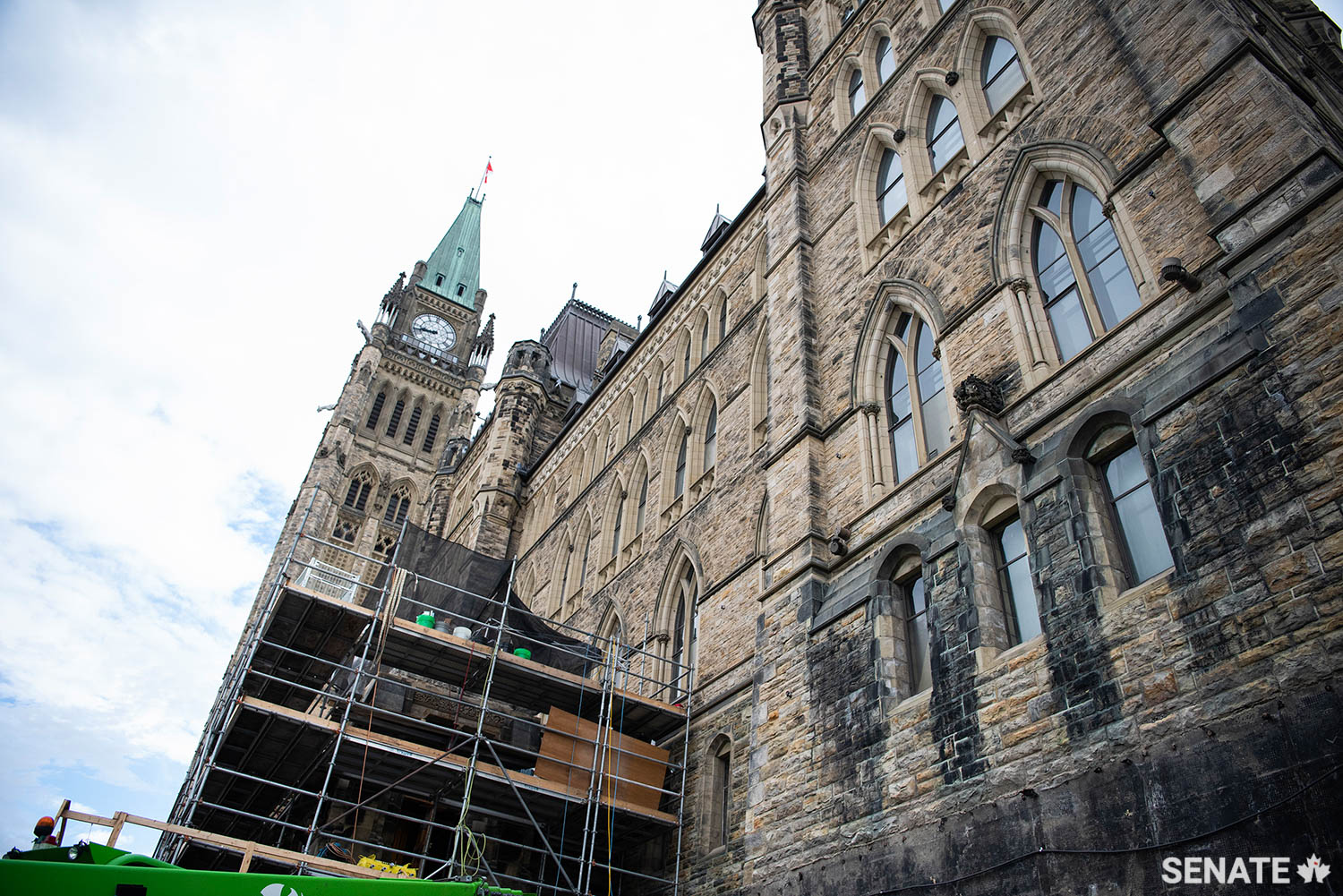
Laser cleaning is the answer — a comparatively new procedure that’s now widely considered to be the industry standard. Centre Block’s rehabilitation team, led by Public Services and Procurement Canada, is turning to this cutting-edge technology to give it a jump on the mammoth rehabilitation project.
Laser cleaning offers several advantages. It’s relatively inexpensive and entails far less cleanup than traditional methods like micro-abrasive cleaning and the use of detergents or corrosive chemicals. Micro-abrasive cleaning, for instance, is messy and hazardous. It also subtly erodes the stone’s surface, leaving the stone clean but more susceptible to weathering and pollution.
Laser, by contrast, is non-penetrating. It emits high-energy light at specific wavelengths and focuses that light on surface deposits while leaving the stone beneath untouched.
The laser pulses in nanosecond bursts, causing grime on the stone’s surface to heat up by just one or two degrees as it absorbs a precisely controlled amount of infrared energy. At the sub-microscopic level, atoms become agitated, bonds between them break, solids become gases and the accumulated material vaporizes.
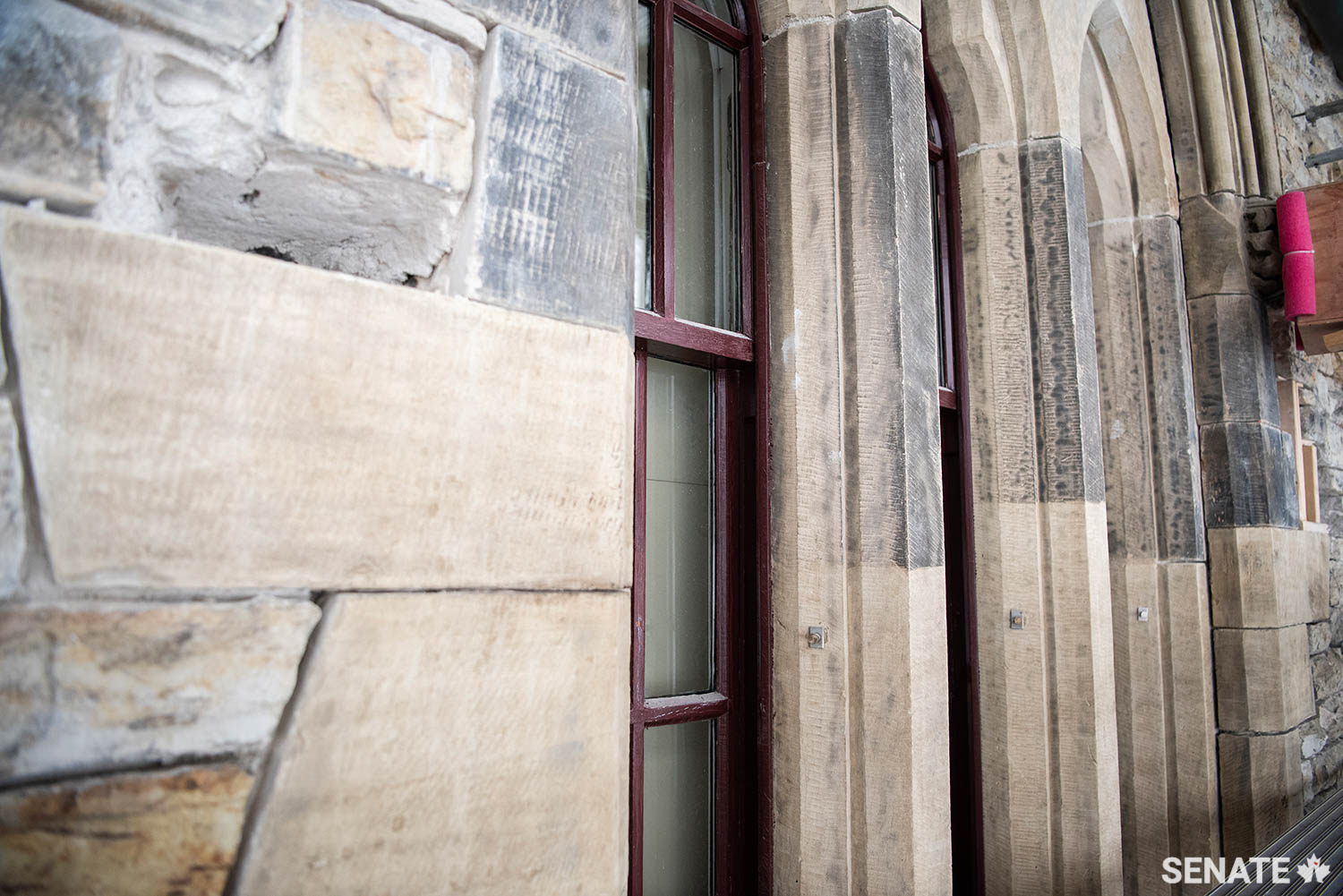
“Laser cleaning works very efficiently on wide expanses of flat stone,” said Kate Westbury, Public Service and Procurement Canada’s heritage lead for the Centre Block Rehabilitation Program.
“We use it as one of the early stages of cleaning; that gives us a better sense of the condition of the stone. Then we use other tools as required.”
The equipment consists of a laser-generating source — essentially an electrically charged light amplifier — connected to a hand control by a long optical cable that looks like a fire hose. The operator hovers the control centimetres above the stone surface while focusing the beam.
“It’s not the first use of this technology in Canada. Two years ago, West Block — the Confederation-era building beside Centre Block — was the first building in the country to be comprehensively cleaned this way,” Ms. Westbury said.
“It proved incredibly successful,” she said.
The first stage of Centre Block’s cleaning was carried out in April 2020. Four contractors tackled 12 test patches on the building’s north face in order to evaluate several alternative procedures and determine how clean a finish to aim for. East Block has also begun to receive this laser treatment.
The idea is to restore much of the sculptural detail that 100 years of pollution, acid rain and weathering have undermined. At the same time, the equipment can be fine-tuned to achieve a balance between a pristine finish and one that maintains the subtle colouration that’s given the building much of its character.
“We’re going to see the Centre Block come to life when cleaning is completed,” said Senator Jim Munson, a member of the Senate’s Subcommittee on Long Term Vision and Plan, which is helping to oversee Centre Block’s rehabilitation.
“It’s going to be as graceful and distinguished as ever, but with a certain clarity that had become blurred by time.”
It will take several years to complete Centre Block’s four exterior faces, three interior courtyards and 11 towers, including the 92-metre Peace Tower.
But when Centre Block finally sheds its cocoon of hoarding and scaffolding, “Canadians will see architectural and sculptural details that had been obscured by decades of heavy atmospheric soiling,” Ms. Westbury said.
“At the same time, we’ll have preserved the building’s natural patina to respect the passage of time.”
